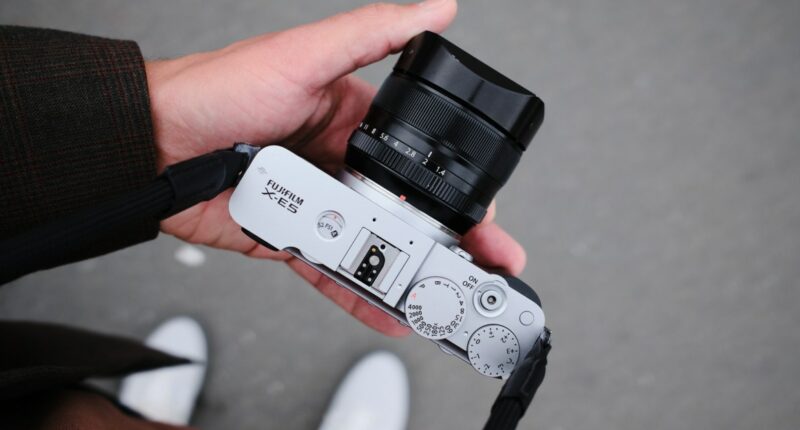Share this @internewscast.com
The X-E5 from Fujifilm is a compact yet formidable piece of technology. Often compared to the X100 series but with the advantage of interchangeable lenses, this camera series has undergone significant changes this year. Previously considered a budget-friendly option, the X-E line can’t really carry that label anymore with a price tag of $1,699.
Even though I’ve experimented with nearly every Fuji model available, this was my first encounter with any camera from the X-E series. The X-E5 impresses with its elegant and compact design, featuring sharp lines, strategically placed buttons, and some unique concave edges that lend it a sophisticated aura. It’s slightly shorter and thicker than the X100VI, yet the weight remains similar, especially with a Fujifilm pancake lens attached. It’s an eye-catching and tactile piece of equipment, prompting numerous inquiries from curious onlookers during my recent use, with two people even mistaking it for a Leica.

In terms of construction, the camera has an outstandingly robust feel. The dials and buttons have a satisfying clickiness, and the side door is perfectly aligned. The flip screen’s hinges are solid, providing the flexibility to turn the screen around entirely, ideal for vlogging. These careful design considerations contribute to its premium feel, though disappointingly, the camera lacks weather sealing—a feature one might expect at this price point.
The big new feature for the X-E is the dedicated film simulation dial. We’ve seen other Fujis adding these, but this was my first time using it. I rarely shift between film simulations since I have a few of my own, which I stick to 99 percent of the time. But the dial does make saving these sims easier, and encouraged me to experiment with different looks a lot more than before.
When it comes to video, you get 6.2k up to 30fps and 1080p up to 240fps. The X-E5 can also film in F-Log and F-Log 2 color spaces, so there is plenty of latitude for post-processing, which will match well with other Fujifilm cameras. And there’s HLG HDR too. The rolling shutter isn’t the greatest, although it’s far from bad. But the X-E5 shouldn’t be your primary video camera for two big reasons: the video mode takes a toll on this battery, and I’ve had it overheat after 13 minutes of continuous filming.
1/7
As stated earlier, this Fuji is equipped with the same sensor we’ve seen for a few years now. It is a 40MP BSI CMOS 5 sensor and it is capable of making some great images. It has been my favorite Fuji sensor since the CMOS III. The photos are sharp, with plenty of detail, and the noise levels are well managed. Anything above 2000 ISO will slowly start to break down and look mushy and soft. This is where the 7-stop IBIS comes in and helps you to keep that shutter open for a bit longer, therefore lowering your ISO too.
I brought this camera with me on a trip to Mexico along with a handful of lenses. The X-E5 proved to be a brilliant travel camera. I loved having the option to stick to my pancake 27mm for an ultra-compact setup or bring the all-rounder 16-55mm zoom lens for some versatility on a long day out.
But despite how much I loved my time with the X-E5, all of the recent Fujifilm cameras are becoming too similar to each other when it comes to performance. Some of those cameras excel in some way, but the X-E5 doesn’t have anything unique going for it. It is a classic jack of all trades. And that’s not a bad thing.
But once you start looking at the prices, you might have some second thoughts. When the X-E4 came out it was $850 and was seen as a hidden gem in the lineup. At $1,700, it starts to become a harder sell. However, if you do pick this one, be assured you’re picking a brilliant and gorgeous camera. It might no longer be a hidden gem, but it’s still a gem.








